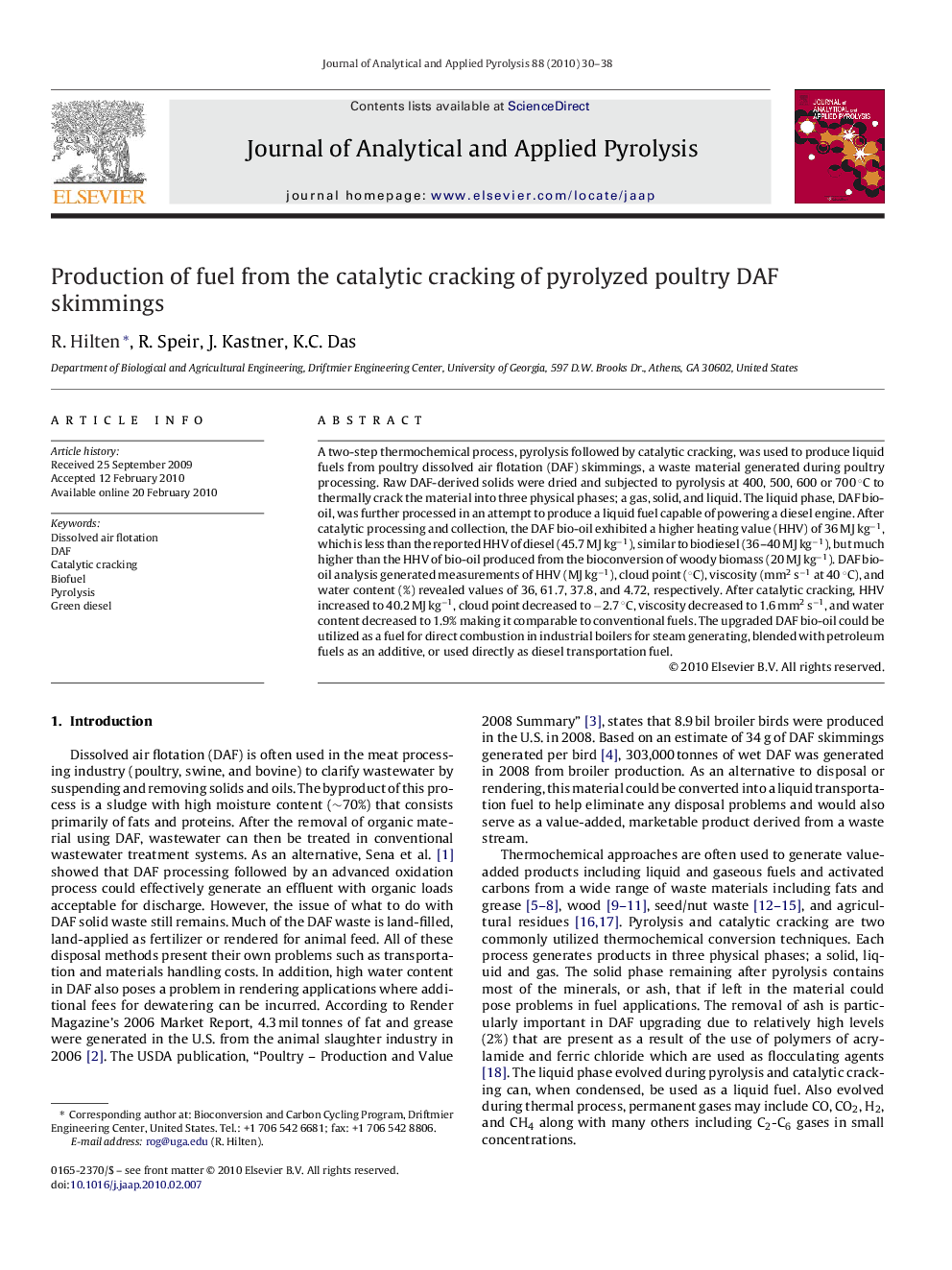| Article ID | Journal | Published Year | Pages | File Type |
|---|---|---|---|---|
| 1198526 | Journal of Analytical and Applied Pyrolysis | 2010 | 9 Pages |
Abstract
A two-step thermochemical process, pyrolysis followed by catalytic cracking, was used to produce liquid fuels from poultry dissolved air flotation (DAF) skimmings, a waste material generated during poultry processing. Raw DAF-derived solids were dried and subjected to pyrolysis at 400, 500, 600 or 700 °C to thermally crack the material into three physical phases; a gas, solid, and liquid. The liquid phase, DAF bio-oil, was further processed in an attempt to produce a liquid fuel capable of powering a diesel engine. After catalytic processing and collection, the DAF bio-oil exhibited a higher heating value (HHV) of 36 MJ kgâ1, which is less than the reported HHV of diesel (45.7 MJ kgâ1), similar to biodiesel (36-40 MJ kgâ1), but much higher than the HHV of bio-oil produced from the bioconversion of woody biomass (20 MJ kgâ1). DAF bio-oil analysis generated measurements of HHV (MJ kgâ1), cloud point (°C), viscosity (mm2 sâ1 at 40 °C), and water content (%) revealed values of 36, 61.7, 37.8, and 4.72, respectively. After catalytic cracking, HHV increased to 40.2 MJ kgâ1, cloud point decreased to â2.7 °C, viscosity decreased to 1.6 mm2 sâ1, and water content decreased to 1.9% making it comparable to conventional fuels. The upgraded DAF bio-oil could be utilized as a fuel for direct combustion in industrial boilers for steam generating, blended with petroleum fuels as an additive, or used directly as diesel transportation fuel.
Related Topics
Physical Sciences and Engineering
Chemistry
Analytical Chemistry
Authors
R. Hilten, R. Speir, J. Kastner, K.C. Das,
